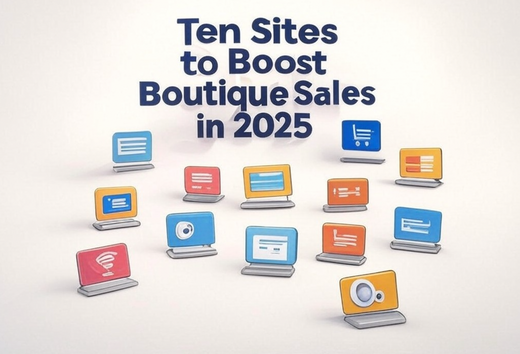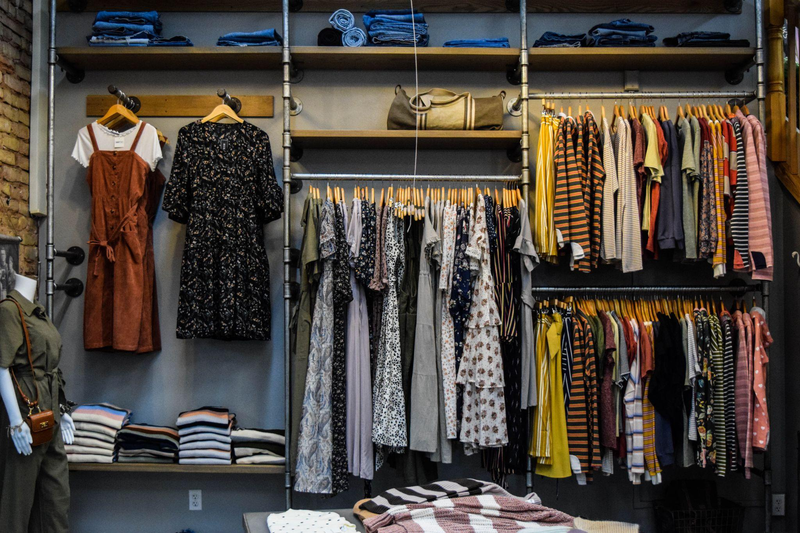The retail market and the economy post covid has taken a nose dive. Retail discretionary spending is at an all time low and it looks like a new normal has arrived. Let's take a look at ways we can save and still expand your boutique.
In the face of economic challenges, entrepreneurs often find innovative ways to thrive, and the clothing boutique industry is no exception. In this blog post, let's explore a strategic approach to launching and sustaining a successful clothing boutique during a recession.
8 Tips To Launch Your Boutique
1. Define Your Niche
Boutiques need to stand out and it's your #1 job to find the right route to make that happen. To stand out you can try things like creating a boutique niche and develop a compelling story. I've seen boutiques find success on concentrating on targeted themes like game day, plus size, young and hip, steals and deals and more. Understanding your target audience and offering something unique—whether it's in style, pricing, or customer experience—will set the foundation for a successful venture.
Understanding your target audience can be a surprisingly difficult thing and you can check out this blog that gives you 5 ways to identify your audience for more help.
2. Build Strong Relationships with Wholesale Vendors
Wholesaler Vendors play a pivotal role in the success of clothing boutiques. Establishing strong relationships with wholesale suppliers can lead to better pricing, favorable credit terms, and a reliable supply of inventory. Companies like Entro have a facebook buying group, this is where you can establish relations and score some deals that you otherwise wouldn't get. It pays to do your research and go the extra mile with the vendors that you will be closely working with.
You can meet in person with wholesale distributors at fashion events, these events like Magic in Vegas, Offprice Show, Dallas Market host hundreds of the top vendors around the country and most of the time are attended by the manager and owners of the brands. If you are willing and outgoing, try your hand at rubbing shoulders with the owner and buying them a drink as it could be a lucrative partnership!
3. Explore New Product Lines
Keep trying new things! Every year new trends occur and some vendors can be better than others at spotting those trends and cultivating them into their seasonal designs. For instance game day has been really popular this year as the rise in college sports continues. Unfortunately branded college apparel is super expensive, just look at Kentucky University site to see $40 tees and $80 sweaters, and Kentucky is no exception. With these ultra high game day pieces as they are boutiques can swoop in and offer up some trendy game day pieces customers who want to support without breaking their bank. It's new trends like these that offer you a fresh start every season to collect some new customers.
4. Strategize Your Vendor Selection
Some boutiques stick with a few vendors and some too many. I say choose vendors that align with your boutique's values and customer preferences and don't worry about having too many or too little brands. Look for vendors with a reputation for quality, reliability, and ethical business practices. Building a strong network of vendors ensures a steady supply chain and minimizes disruptions, even in challenging economic times.
5. Build Up Your Online Presence
Building an online site is the cheapest and most effective thing you can do in a recession. Online shops are a way to connect 24/7 with customers and can be completed in all under $100/month. Even if you have a brick and mortar store incorporate e-commerce into your boutique's strategy helps you reach a wider audience. Read my blog on how to build a great custom website here.
Utilize social media platforms on your site to showcase your inventory, customer RL(real life) photos and directly engage with customers..
6.Leverage Social Media Marketing
Get ready to harness the power of billion dollar social media platforms and promote your boutique to the world. Utilize platforms like Instagram, Tiktok, Facebook, and Pinterest to showcase your clothing lines, share style tips, and engage in conversations with your audience. Try collaborating with small influencers to extend your reach and build brand awareness. Perhaps you can offer them free samples in exchange for a quick review.
7.Create Smart Financial Planning
During a recession, every penny counts. Create a detailed budget that includes all aspects of your boutique business—from inventory and marketing to operating expenses. I find it's better to go less on purchasing clothing than more. Try adopting drop shipping into your store to provide the same trendy pieces while paying no costs on the merchandise or storage. Try to limit the number of employees you have and hire family and friends that are willing and able to help you build your boutique. Offer them incentives and perks for working with you if you can't afford them the big salary.
8. Customer-Centric Approach
A successful boutique thrives on satisfied and loyal customers. In crisis financial times like these its best to invest in direct relationships with loyal customers. Make sure that you keep your core group of customers because surely as the economy worsens you will lose a lot of new and periphery customers. Provide exceptional customer service, personalize shopping experiences, and actively seek customer feedback. Implement loyalty programs and promotions to encourage repeat business, turning satisfied customers into brand advocates.
Successfully navigating a recession in the clothing boutique business requires a strategic blend of niche targeting, strong wholesale relationships, and effective vendor management. By diversifying your product lines, optimizing your online presence, and maintaining a customer-centric approach, your boutique can not only survive but also thrive in challenging economic times. Remember, adaptability and a commitment to quality are key ingredients for long-term success in the boutique industry.
Best of luck!
Anna


































